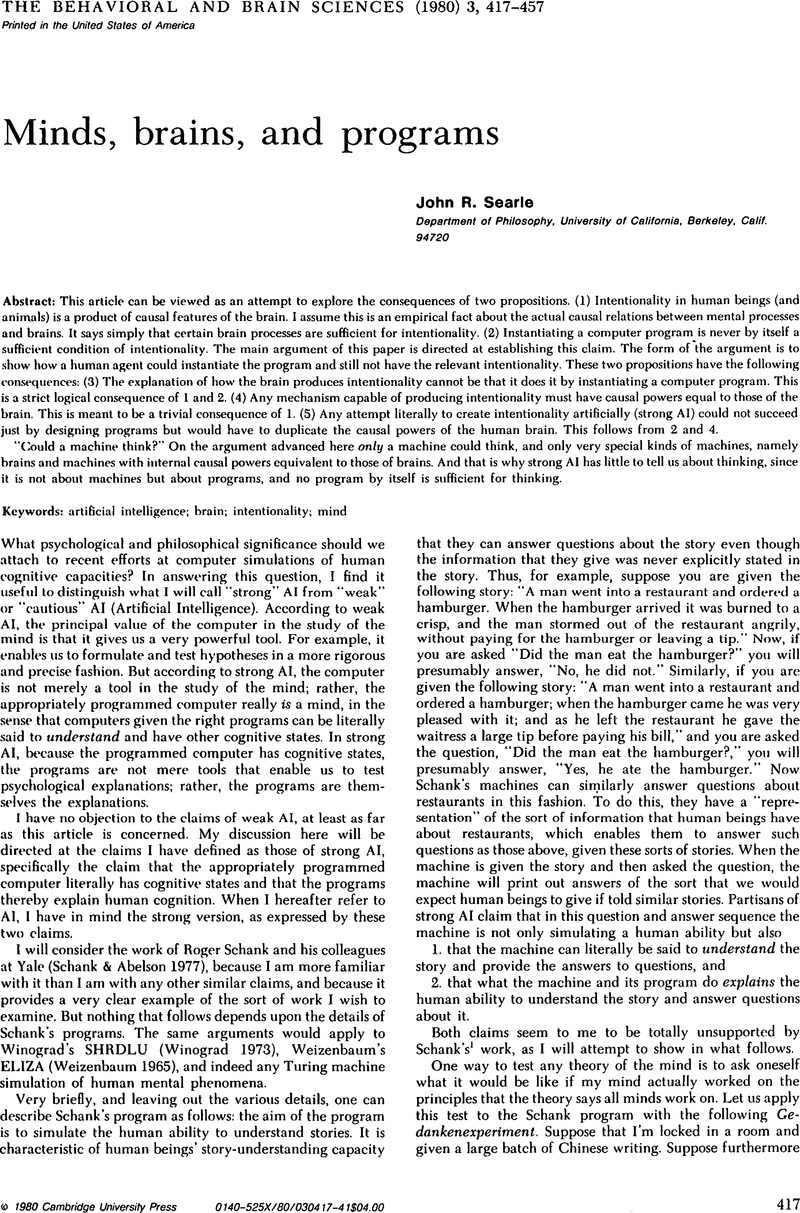Crossref Citations
This article has been cited by the following publications. This list is generated based on data provided by Crossref.
1985.
Psychoanalysis and Cognitive Psychology.
p.
278.
Maloney, J. Christopher
1987.
The right stuff.
Synthese,
Vol. 70,
Issue. 3,
p.
349.
Beckermann, Ansgar
1988.
Sprachverstehende maschinen.
Erkenntnis,
Vol. 28,
Issue. 1,
p.
65.
Weiss, Thomas
1990.
CLOSING THE CHINESE ROOM.
Ratio,
Vol. 3,
Issue. 2,
p.
165.
Butler, Keith
1995.
Representation and computation in a deflationary assessment of Connectionist cognitive science.
Synthese,
Vol. 104,
Issue. 1,
p.
71.
Shani, I.
2005.
Computation and Intentionality: A Recipe for Epistemic Impasse.
Minds and Machines,
Vol. 15,
Issue. 2,
p.
207.
Kuczynski, John-Michael
2006.
Formal operations and simulated thought.
Philosophical Explorations,
Vol. 9,
Issue. 2,
p.
221.
Sprevak, Mark D.
2007.
Chinese Rooms and Program Portability.
The British Journal for the Philosophy of Science,
Vol. 58,
Issue. 4,
p.
755.
Ramsey, William
2016.
Untangling two questions about mental representation.
New Ideas in Psychology,
Vol. 40,
Issue. ,
p.
3.
2023.
The Cambridge Handbook of Computational Cognitive Sciences.
p.
1163.
Sprevak, Mark
2023.
The Cambridge Handbook of Computational Cognitive Sciences.
p.
1201.
Gariti, Alexander
2024.
Do androids dream of informed consent? The need to understand the ethical implications of experimentation on simulated beings.
Monash Bioethics Review,
2024.
Moralische Roboter.



